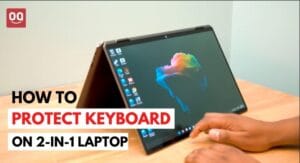It’s no secret that cable management is important. After all, who wants to see a tangled mess of cables every time they sit down at their computer? They look unsightly and can be dangerous. Exposed cables are a tripping hazard and can easily be damaged.
Also, hiding those unsightly cables can make your setup look a lot neater and more organized. But still, people avoid doing cable management because it requires time and effort, and most of them don’t know how to hide keyboard and mouse cables properly. Plus, some people think that it’s simply not worth the bother.
But we’re here to tell you that it is worth the bother! Here are 9 simple and easy ways to hide those keyboard and mouse cables.
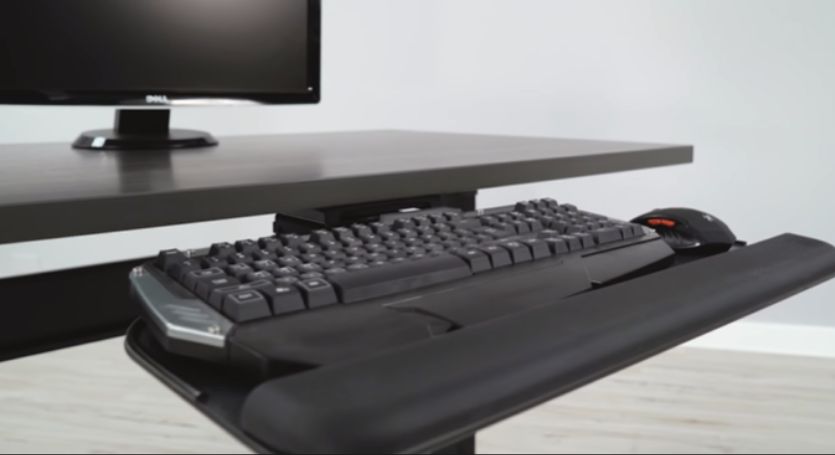
A keyboard tray is a tray that sits under your desk and holds your keyboard and mouse. It can be attached to the desk or can be free-standing.
Keyboard trays are a great way to hide your keyboard and mouse cables because they keep the cables organized and hidden from view. In addition, they come with built-in cable management features, including slots or channels you can route the cables through. This means that all of your cables will be neatly tucked away, out of sight.
Read: Are Keyboard Trays Good for Gaming
Plus, a keyboard and mouse tray can help free up valuable desk space. They also make it easy to move your keyboard and mouse around, so you can find the perfect position for comfortable typing and avoid strain on your wrists.
2. Manage the Cables with cable ties
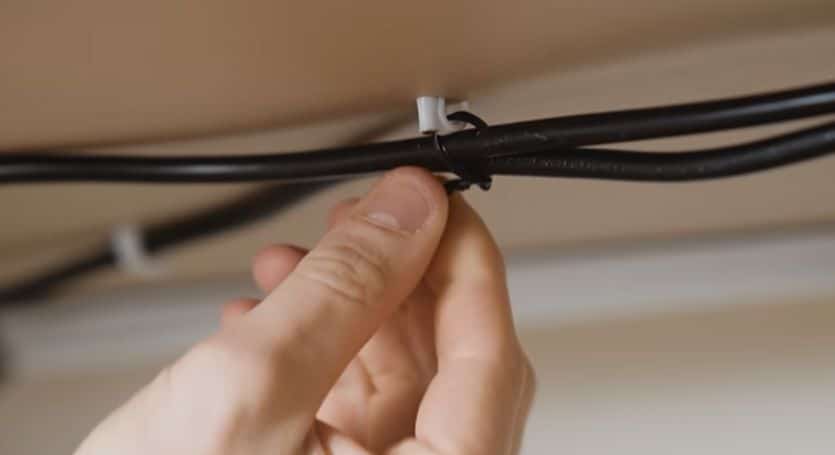
Cable ties are a simple and effective way to manage cables and keep them organized. They work by bundling the cables together so they take up less space and are less likely to become tangled.
To use cable ties, start by grouping your keyboard and mouse cables based on where they go. For example, you might have a group of cables that goes to your monitor, another group that goes to your speakers, and another group that goes to your printer.
Once you have the cables grouped together, take a cable tie and loop it around them. Then, pull the ends of the tie tight and cinch it down. Repeat this process until all of your cables are securely bundled together.
3. Use cable management covers

Cables covers are plastic or metal tracks that you can attach to your desk, floor, or wall. They have a slot in the middle where you can route your keyboard and mouse cables, so they’re hidden from view.
Using cable covers can be a great option if you don’t want to deal with the hassle of bundling your cables together with ties. They’re also less likely to damage your cables.
Plus, cable covers are easy to install. You can find them at most hardware stores, and they come in various sizes to fit your needs.
Also Read: How Far Do Wireless Keyboards Work?
4. Get custom cables
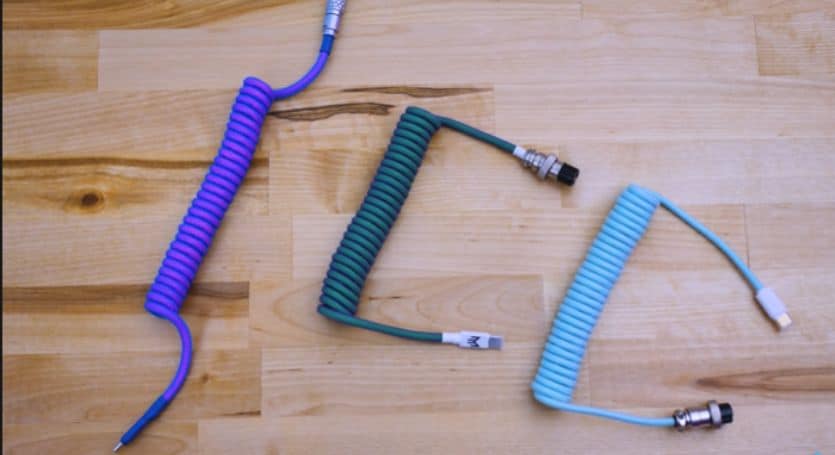
If you’re not into hiding your keyboard and mouse cables, you could just get custom cables. Custom cables are made to order, so you can specify the length, color, and connector type you need.
This means that you can get cables that are exactly the right length for your needs, so there’s no excess wire to deal with. Plus, you can choose a cable color that blends in with your décor, so they’re less likely to be noticeable.
You can even use coiled cables, a type of custom cable specifically designed to reduce clutter. They work by retracting the excess length of the cable so it’s not hanging down and taking up space.
Custom cables are a bit more expensive than standard ones, but they’re worth it if you want the perfect solution for your needs.
5. Tape the cables
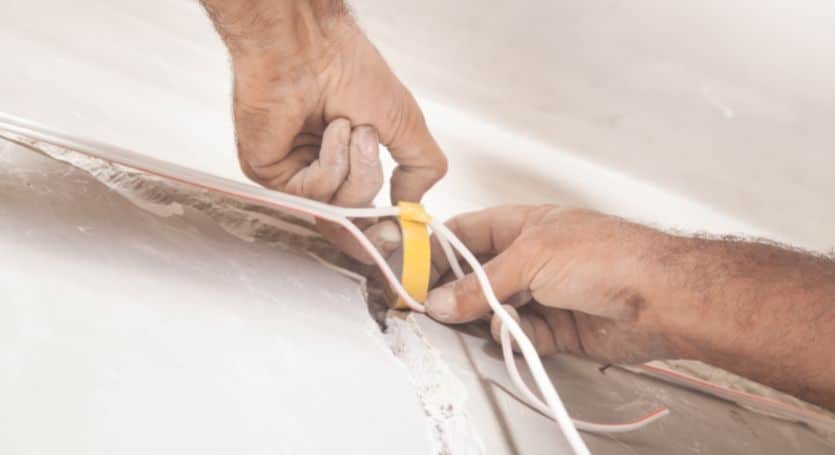
If you are looking for a cheap and easy way to hide your keyboard and mouse cables, then you can just use tape. Tape is a great way to secure the cables to the back of your desk or to the floor so they’re out of sight.
First, you have to gather all of your cords and group them together. Then, take a piece of tape and wrap it around the cables. Be sure to wrap the tape tightly so the cords stay secure.
You can use any type of tape that you have on hand, but clear tape works best because it’s less noticeable. You can also buy special cables management tape that’s designed for this purpose.
Also Read: How to Get Hair Out of Keyboard?
6. Make a hole in your desk
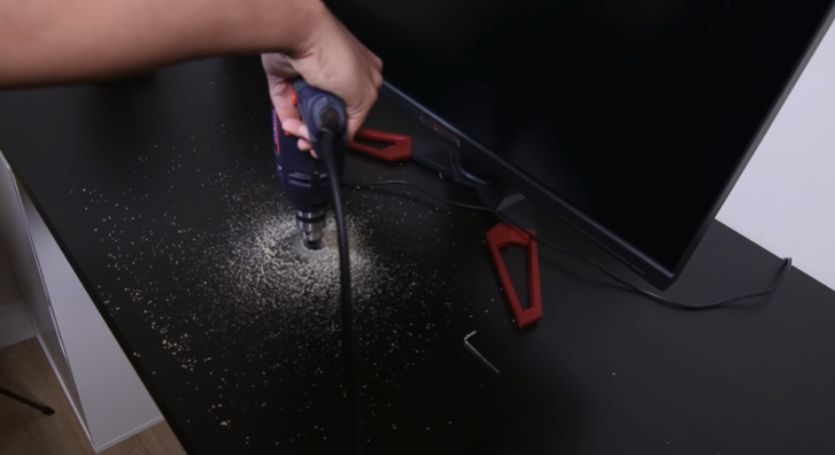
If you want a more permanent solution for hiding your cables, you can make a hole in your desk. This will allow you to route the cables through the hole and down into the space below your desk, out of sight.
However, to do this, you will need to have a drill and some basic carpentry skills. If you’re not comfortable drilling a hole in your desk, then you can hire a professional to do it for you.
7. Build a custom desk

If you want a convenient solution, you could build a custom desk with built-in cable management features. This is a great option if you’re starting from scratch or if you’re replacing an old desk.
When you build a custom desk, you can add features like wire grommets and cable troughs. These will allow you to route your cords through the desk, so they’re hidden from view. Plus, you can build the desk to fit your specific needs. For example, you could add extra shelves or drawers to store all of your office supplies.
Building a custom desk is a big project, but it’s worth it if you want a beautiful and functional workspace.
8. Place some action figures on your desk
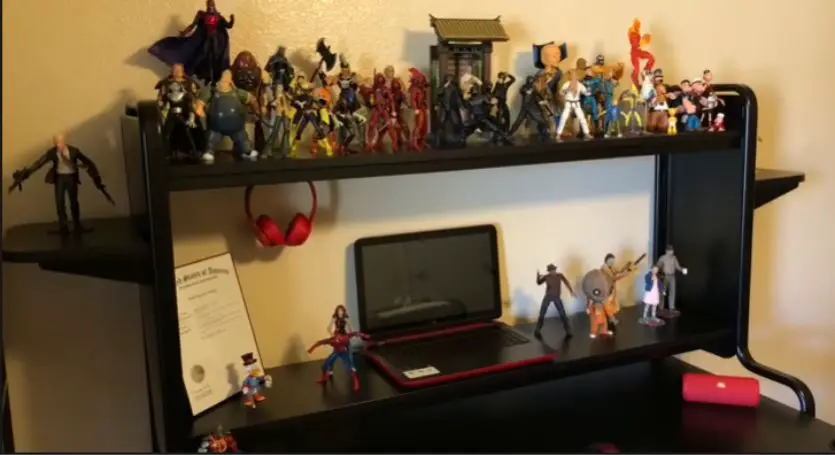
If you want to hide your keyboard and mouse cables without using tape or hiding them under your desk, you can use action figures to make them less noticeable. Plus, the action figures will add a bit of personality to your desk.
You can use any type of action figure that you want, but larger ones work best. You can even use multiple figures to create a scene. For example, you could place a few action figures on your desk and have them fighting over a computer cord.
9. Use a wireless keyboard and mouse instead

If you are fed up dealing with tangled cables, then you can just get a wireless keyboard and mouse. This will eliminate the need for cables altogether, so you won’t have to worry about them anymore.
Wireless keyboards and mice are easy to use, and they’re becoming more affordable all the time. Plus, they offer a lot of freedom in terms of placement. You can put your keyboard and mouse anywhere on your desk without having to worry about cables getting in the way.
Also Read: Are Wireless Keyboards Secure?
Goodbye words
Cable management can be a challenge, but with a little bit of effort, you can hide your keyboard and mouse cables, and keep your desk looking neat and tidy.
There are lots of different solutions that you can try, so find one that works best for you. If all else fails, you can always get a wireless keyboard and mouse to eliminate the need for cables altogether.
As you have read the full article, you can confidently say that you know how to hide keyboard and mouse cables like a pro. I hope that you have found the information to be helpful and that you will be able to use it to tidy up your desk.
Thanks for reading!



